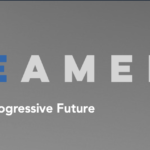The number of people in shelters, temporary housing, and unsheltered settings across the United States set a new record this year, "largely due to a sharp rise in the number of people who became homeless for the first time."
That's a key takeaway from an annual report released Friday by the U.S. Department of Housing and Urban Development (HUD).
On a single night in January 2023, "roughly 653,100 people—or about 20 of every 10,000 people in the United States—were experiencing homelessness," with about 60% in shelters and the remaining 40% unsheltered, according to HUD. That's a 12% increase from 2022 and the highest number of unhoused people since reporting began in 2007.
"We must address the main driver of homelessness and housing instability—the gap between low incomes and rent costs."
Jeff Olivet, executive director of the U.S. Interagency Council on Homelessness—the federal agency behind President Joe Biden's plan from last year to reduce homelessness 25% by 2025—toldThe Associated Press that extra assistance during the Covid-19 pandemic "held off the rise in homelessness that we are now seeing."
Research and advocacy groups responded to the HUD report by also highlighting the positive impacts of federal pandemic-era relief including emergency rental aid, a national moratorium on evictions for nonpayment, and the expanded child tax credit.
"The historic resources and protections provided during the pandemic kept millions of renters stably housed, and the success of these resources is shown by the decrease in homelessness over that same period," said National Low-Income Housing Coalition president and CEO Diane Yentel. "Just as these emergency resources were depleted and pandemic-era renter protections expired, however, renters reentered a brutal housing market, with skyrocketing rents and high inflation."
"Eviction filing rates have now reached or surpassed pre-pandemic averages in many communities, resulting in increased homelessness," she noted. "Without significant and sustained federal investments to make housing affordable for people with the lowest incomes, the affordable housing and homelessness crises in this country will only continue to worsen."
Olivet said that "while numerous factors drive homelessness, the most significant causes are the shortage of affordable homes and the high cost of housing that have left many Americans living paycheck to paycheck and one crisis away from homelessness."
National Alliance to End Homelessness CEO Ann Oliva called for funding "urgent and overdue investments in affordable housing and rental assistance to keep people housed, as well as in proven housing and supportive service models that rapidly reconnect people experiencing homelessness with permanent housing."
Peggy Bailey, vice president for housing and income security at the Center on Budget and Policy Priorities, also stressed the need for a funding boost, saying that "we have the tools to ensure everyone has a safe, stable place to live, but we've failed to invest in them."
"Homelessness is unacceptable," Bailey declared. "We must address the main driver of homelessness and housing instability—the gap between low incomes and rent costs. That means expanding rental assistance for all people with the lowest incomes."
HUD Secretary Marcia Fudge similarly said Friday that "homelessness is solvable and should not exist in the United States."
"From day one, this administration has put forth a comprehensive plan to tackle homelessness and we've acted aggressively and in conjunction with our federal, state, and local partners to address this challenge," she continued. "We've made positive strides, but there is still more work to be done. This data underscores the urgent need for support for proven solutions and strategies that help people quickly exit homelessness and that prevent homelessness in the first place."
Academics and advocates have long criticized the department's approach, which relies on reporting from a single night each January. Samuel Carlson, manager of research and outreach at the Chicago Coalition for the Homeless, toldThe Washington Post last year that "the HUD data is just catching a fraction of the people."
For that night in January, HUD found that roughly 186,100 people who reported experiencing homelessness, or over a quarter, were part of a family with children, a 16% increase from last year. Additionally, more than 1 in 5 people were age 55 or older, 35,574 were veterans, and 31% "reported having experienced chronic patterns of homelessness."
"People who identify as Black, African American, or African, as well as Indigenous people (including Native Americans and Pacific Islanders), continue to be overrepresented among the population experiencing homelessness," the report notes. "People who identify as Asian or Asian American experienced the greatest percentage increase among all people experiencing homelessness," while the largest numerical increase "was among people who identify as Hispanic or Latin(a)(o)(x)."
The report adds that over half "were in four states: California (28% of all people experiencing homelessness in the U.S, or 181,399 people); New York (16% or 103,200 people); Florida (5% or 30,756 people); and Washington (4% or 28,036 people)."
While progressive lawmakers have introduced federal legislation to help tackle the issue—from Congresswoman Cori Bush's (D-Mo.) Unhoused Bill of Rights to the Housing is a Human Right Act led by Reps. Pramila Jayapal (D-Wash.) and Grace Meng (D-N.Y.)—such measures are unlikely to advance with a GOP-controlled House and divided Senate.
Republished from Common Dreams under Creative Commons (CC BY-NC-ND 3.0).

















